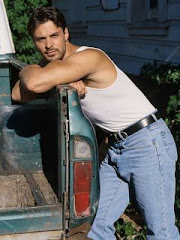Murder in the Smart Set is the backdrop for this week's film noir, Otto Preminger's LAURA, starring Gene Tierney, Dana Andrews, Clifton Webb, Vincent Price and Judith Anderson. Taking over directing duties when Rouben Mamoulian was fired, Preminger was Oscar nominated as Best Director for his very first assignment.
Tierney was the second choice to play the enigmatic Laura after Jennifer Jones had turned it down and Darryl F. Zanuck's choice, Laird Cregar was vetoed by Preminger in favor of Clifton Webb, to play the venomous Waldo Lydecker, a role that set him up for the next twenty years at Fox and made him an overnight sensation at fifty-five. The combination of a haunting score by David Raksin, Oscar winning cinematography by Joseph LaShelle, a chic wardrobe by Bonnie Cashin and the legendary beauty of Gene Tierney, helped LAURA earn its reputation as the "sophisticated who-dunit."
But "Laura" also remains one of the most romantic films of the era. What was the secret behind the beautiful girl in the portrait? What effect did she have on everyone around her? And why, if everyone adored her, did someone succeed in killing her? Everyone sees her differently, but who was she? These are the questions that plague detective Dana Andrews as an average guy who falls in love with a beautiful girl in a picture on the wall. "That was Laura, but she's only a dream...."
Clifton Webb is a wicked delight in this film and others that followed. Online encyclopedia glbtq says this about him:
Webb's portrayal of the murderous aesthete Waldo Lydecker not only made him a movie star, it was also at once a summation and expansion of Hollywood's "sissy" characters. Sissies were a popular fixture of 1930s comedies and musicals, where the presence of effeminate character actors such as Franklin Pangborn and Edward Everett Horton instantly signified to audiences a sophisticated, sexually ambiguous world (the films of Astaire-Rogers abound with such characters).Here's a short clip of Webb at his most outrageous-queen best in Sitting Pretty (1948):
The sissy was usually a fussy foil to the heterosexual star, female or male, a sexless comic figure who popped up briefly to liven things up with a bon mot or a raised eyebrow or a dramatic exit.
In Laura, the sissy retains all the old characteristics--sophistication, brittleness, cynicism--while adding a new element of suppressed violence and sexual passion that threatens not only the other characters but also widely held cultural assumptions about the passivity of the effeminate male.
Webb played this role to perfection; as Waldo he is at once droll and scary, capable of enormous pathos and vicious vitriol ("I should be sincerely sorry to see my neighbors' children devoured by wolves"). He is at once ridiculed and indulged by a straight policeman, standing in for society, who doesn't realize until it is almost too late that this sissy is also a killer.
Webb had the charisma and authority to single-handedly rescue the sissy from secondary roles; he is either the star or a major player in all of his films that followed.
The eternal puzzle of the sissy to straight society can be easily located in Webb's characterizations throughout his film career from 1944 to 1962.
Vito Russo reported in The Celluloid Closet that the pre-shooting script of Laura made Webb's Waldo Lydecker explicitly gay, a perverse Pygmalion to Gene Tierney's Galatea, but that many of these references were cut. Despite the film's conflicted view of Lydecker, Webb's nuanced portrayal makes it possible to read him equally credibly as both spurned heterosexual lover and woman-hating queen.




























No comments:
Post a Comment